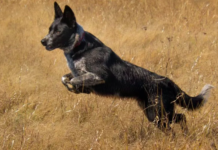Last Updated on August 12, 2023 by Fumipets
What You Need to Know About Hip Dysplasia In Dogs
Hip dysplasia is a common orthopedic condition that affects dogs, particularly larger breeds, and can lead to discomfort and reduced mobility. This condition occurs when the hip joint doesn’t develop properly, resulting in the misalignment of the hip ball and socket. As a result, the joint can become loose and lead to joint deterioration over time.
Symptoms of hip dysplasia include difficulty in rising, walking, or climbing stairs, as well as a noticeable decrease in activity levels.
Lameness or limping, especially after exercise, may also indicate hip dysplasia. The condition is influenced by both genetic and environmental factors, such as rapid growth and excess weight gain in puppies.
Diagnosis involves a combination of physical examinations, X-rays, and evaluations of the dog’s medical history. While there’s no cure for hip dysplasia, various management strategies can help alleviate discomfort and improve the dog’s quality of life.
Weight management, controlled exercise, physical therapy, and joint supplements are among the approaches to consider.
In more severe cases, surgical options such as hip replacement or joint realignment may be recommended. Early detection and intervention are crucial in managing the condition effectively. Responsible breeding practices, such as screening breeding dogs for hip dysplasia, can also contribute to reducing the prevalence of the condition in future generations.
Remember, if you suspect your dog may be experiencing symptoms of hip dysplasia, consulting with a veterinarian is essential. With proper care, attention, and a tailored management plan, dogs with hip dysplasia can still lead happy, active lives.
Hip Dysplasia In Dogs
In huge and gigantic breed dogs, hip dysplasia is a frequent developmental issue. It is brought on by a deformed hip, which causes joint laxity, or looseness, which may cause discomfort, mobility problems, and osteoarthritis.
Even though the illness exists from an early age, many dogs don’t exhibit clinical symptoms until they are older. However, early detection of hip dysplasia in your pet might offer you the chance to correct the malformed joint before it becomes problematic.
What is Hip Dysplasia?
When a dog’s hip joint doesn’t grow properly, it has canine hip dysplasia. A ball-and-socket joint like the hip may become exceedingly loose and unstable if the two parts don’t develop appropriately and at the same pace.
According to the American College of Veterinary Surgeons, hip dysplasia in dogs may result in major issues, even though it may not seem like a huge matter. The architecture of the hip joint may be permanently harmed when a dog goes about with a loose hip joint.
Dogs that experience aberrant hip mobility may eventually develop osteoarthritis (also known as degenerative joint disease), which tears away cartilage and causes the growth of scar tissue and bone spurs. Canine hip dysplasia develops mostly as a result of genetics.
Large breed dogs are more susceptible to the sickness, and dogs may transfer the ailment to their progeny. Breeds that are often impacted include Labrador retrievers, Newfoundlands, Rottweilers, Golden Retrievers, Saint Bernards, and German shepherds.
However, breed is not the sole risk factor for hip dysplasia; any breed, including mixed breeds, is susceptible to it. When fed more food than they need, puppies that are genetically predisposed to hip dysplasia are more likely to experience faster-than-normal weight gain and development, which increases their chance of acquiring the disease. Another danger factor in pups is intense exercise.
What Are the Signs of Hip Dysplasia in Dogs?
Dogs of any age may develop canine hip dysplasia, albeit not usually in the same manner. The indications are separated by age of onset according to the Morris Animal Foundation:
Juvenile (dogs younger than 18 months of age)
- lameness (limping) in one or both of the back legs
- bunny-like hopping (dog holds its back legs together and hops instead of running normally)
- difficulty getting up
- clicking sound from hips when moving or getting up
- shifting of weight to front legs
- unable to exercise for long periods
Mature (dogs older than 18 months of age)
- history of lameness (limping) in back legs
- limping after exercising
- loss of muscle mass in one or both of the back legs
- difficulty jumping or climbing
It’s important to note that while dogs can develop clinical signs as puppies, many don’t show any outward symptoms until they’ve lived with the condition for multiple years.

How is Hip Dysplasia Diagnosed?
Although the aforementioned symptoms may indicate hip dysplasia, Sarah Kirkwood, DVM, of Kansas City Veterinary Care in Kansas City, Missouri, explains that hip X-rays are often used to detect the problem in both young and older dogs. Additionally, your veterinarian may inspect the hip with their hands to look for any looseness.
What is the Treatment for Hip Dysplasia?
The optimal course of action for treating hip dysplasia depends on the age, health, and way of life of the dog, according to Kirkwood. She often advises surgery because it offers the best long-term comfort for young canines who will live long, active lives.
For dogs with hip dysplasia, there are two popular surgical procedures: complete hip replacement, which includes implanting an artificial hip joint, and femoral head ostectomy, in which the head and neck of the femur are removed and scar tissue grows to construct a “false joint.”
Kirkwood claims that at-home medical therapy may successfully control pain in elderly dogs and those for whom surgery is not an option. For dogs with mild to severe illness, home treatments for hip dysplasia are often suggested.
Nonsteroidal anti-inflammatory medicines (NSAIDs) are the pharmaceuticals most often used to treat joint discomfort from hip dysplasia, according to her. It’s crucial to remember that NSAIDs (like carprofen) may have serious adverse effects and need to be constantly watched. “Supplements like glucosamine and chondroitin can help prevent cartilage breakdown in the joint, which can ease pain as well,” says Kirkwood.
Cold laser therapy, acupuncture, and physical therapy are further possible therapies. The best alternatives for you and your pet will be decided in collaboration with your veterinarian. Remember that treatments often need to be changed over time, so heed your veterinarian’s advice about follow-up appointments.
How Can Hip Dysplasia in Dogs Be Prevented?
Maintaining your pet’s healthy weight, particularly while he’s young, is one strategy to cut down the growth of the side effects of hip dysplasia, according to Kirkwood. Hip X-rays may be used to check your dog for the problem at a young age.
These radiographs may help you decide if you want to think about doing an early surgical intervention and how probable it is that your dog will have issues in the future.
Kirkwood claims that although hip dysplasia normally does not shorten a dog’s life, it sometimes does. She says it may be extremely challenging to maintain a high quality of life if a dog gets so uncomfortable that [he] no longer wants to get up and go about. This is particularly true given that most affected dogs are huge types.
Do not be afraid to inquire about the dangers and symptoms of hip dysplasia from your veterinarian if you own a big breed dog of any age. The ideal person to provide information and guidance is a veterinarian who is familiar with your pet and can inspect him personally.
Frequently Asked Questions
What is hip dysplasia in dogs?
Hip dysplasia is an orthopedic condition in dogs where the hip joint doesn’t develop properly, leading to misalignment of the hip ball and socket. This can result in joint instability and deterioration over time.
What breeds are more susceptible to hip dysplasia?
Larger breeds, such as German Shepherds, Labrador Retrievers, and Great Danes, are more prone to hip dysplasia. However, it can affect dogs of all sizes and breeds.
What are the signs of hip dysplasia in dogs?
Symptoms include difficulty in walking, running, or climbing stairs, as well as decreased activity levels. Dogs might also exhibit lameness or limping, especially after exercise.
How is hip dysplasia diagnosed?
Diagnosis involves a physical examination, evaluation of medical history, and X-rays to assess the hip joint’s condition. Veterinarians use these tools to determine the extent of misalignment and joint deterioration.
Can hip dysplasia be treated?
While there’s no cure, various treatments aim to manage the condition. Weight management, controlled exercise, physical therapy, and joint supplements can help alleviate discomfort. In severe cases, surgical options like hip replacement may be considered. Early detection and intervention are key to effective management.
https://www.youtube.com/watch?v=NMc3uEgon20


















